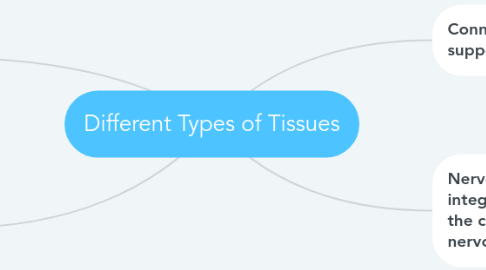Different Types of Tissues
by Mrk Matt


1. Muscle tissue - contracts to initiate movement in the body.
1.1. Extensible, elastic, contractile, organized into bundles
2. Epithelial tissue - creates protective boundaries and is involved in the diffusion of ions and molecules.
2.1. Highly cellular, function as receptors, form a barrier, minimal extracellular matrix, avascular, innervated,
3. Connective tissue - underlies and supports other tissue types.
3.1. Proper: Loose; dense (regular, irregular) connective tissue Embryonic: Mesenchymal; mucous connective tissue Specialized: Cartilage; adipose; bone; blood
3.1.1. based upon two characteristics: the composition of its cellular and extracellular components and its function in the body. Tissues are either classified as proper, embryonic, or specialized.
